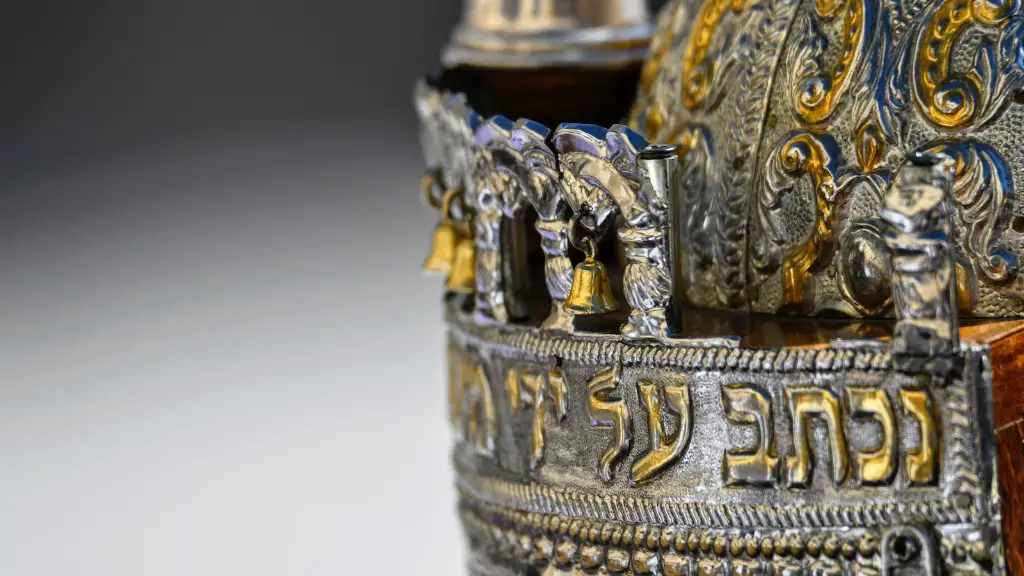What Is Raja Yoga In Hinduism
Raja Yoga, otherwise referred to as Royal Yoga, is an ancient form of Hinduism that seeks to unite the individual soul or jiva with the supreme power of the universe, referred to as Brahman or paramatma. As a path or set of teachings, Raja Yoga is considered to be a systematic approach to the realization of one’s divine potential. It is the integration of body, mind, and spirit where one is able to experience a higher level of consciousness. It can be thought of as a spiritual philosophy, or technique, by which an individual can use his or her own innate potential to rise above habitual patterns to connect with the divine within. The practice of Raja Yoga is also said to lead to a profound connection with the universal consciousness.
In Hinduism, the goal of Raja Yoga is to ultimately be liberated from the cycle of death and rebirth and ultimately achieve ‘moksha’, or salvation of the soul. Practitioners of Raja Yoga believe that through meditation and the practice of various spiritual exercises, one can begin to shed the inherent limitations that prevent one from experiencing the divine within. The Yogic system consists of 8 limbs, also referred to as the ‘Ashtanga Yoga’, with the first limb consisting of the different aspects of ethical code, such as non-violence, truthfulness and so on. The fifth limb, known as Pratyahara, refers to the withdrawal of the senses and the ensuing concentration of the mind.
Proponents of Raja Yoga point to the many benefits of the practice, saying that when it is properly practiced, one is left feeling calm, centered, and energized all in one. Additionally, Raja Yoga is said to help reduce stress, anxiety and depression, as well as create balance within the body. It is also said to promote greater physical health and overall wellbeing. The practice of Raja Yoga also involves developing a spiritual relationship with the divine and cultivating a more positive attitude towards the world and other people, resulting in a greater sense of inner peace and joy.
Raja Yoga can be practiced in different ways and by people of all levels of spiritual experience. It is not uncommon for those who practice it to engage in special chanting and meditation techniques as well as various rituals and practices. For those who are interested in learning more about Raja Yoga, there are a variety of online resources available which provide more detailed information about the practice and its various components.
Meditation
Meditation is one of the key components of Raja Yoga and is said to help bring stability and clarity of the mind and help practitioners access the divine within. During meditation, a state of deep relaxation is attained, allowing the practitioner to simply observe his or her thoughts without any judgement or attachment and eventually let go of all mental activity. This helps cultivate a higher level of awareness, allowing one to connect with the innermost self. Along with relaxation and concentration techniques, practitioners may also use visualizations, mantras and breath work.
Meditating on a daily basis can create a profound sense of inner stillness and peace, helping to reduce stress and tension and can lead to a greater understanding of one’s own divine nature. Studies have also shown that even a few minutes of meditation a day can help in improving mental function, clarity and creativity, as well as create better moods. There are a variety of meditation techniques that are used in Raja Yoga and they can vary in style and complexity, depending on the individual and their level of experience.
Yama, Niyama and Karma
Yama and Niyama are codes of moral conduct and ethics, which aim to help the practitioner develop qualities such as non-violence, truthfulness, and austerity. They form the foundation of Raja Yoga and provide the practitioner with guidelines for conducting their lives. Practicing these codes of ethics allows one to create a necessary balance, allowing them to be more connected with their own inner spirit and ultimately become more open to the divine within.
Karma is also an integral part of Raja Yoga, and is a means of understanding the effects of one’s own actions. It is believed that what a person does, thinks, or says will determine their own destiny, as well as the destiny of those around them. If a person acts with kindness and compassion, it is believed that they will be blessed with good karma, while negative actions will result in bad karma. Consequently, it is important to practice the codes of Yama and Niyama as a means of achieving one’s highest potential and achieving spiritual enlightenment.
The Teachings of Other Yoga Forms
Raja Yoga consists of a multitude of teachings and other forms of yoga contain their own teachings as well. Hatha yoga is an ancient form of yoga which consists of physical postures and breathing techniques which can be used to help increase strength, flexibility, and relaxation. Bhakti yoga is focused on developing love and devotion towards a deity or divine power. Other forms, such as Jnana yoga focus on the development of knowledge and understanding, as well as cultivating equanimity, or non-attachment to material things. All of these forms of Yoga ultimately seek to help an individual develop relationships with both the physical and spiritual aspects of existence.
No matter which form of yoga a practitioner decides to pursue, it is important to understand the underlying philosophy and teachings of each as a way to access the divine within. Through practice and dedication, a practitioner of raja yoga is able to move beyond their individual egos and limitations and connect with the divine within.
Mantras and Chanting
Chanting and mantras are important aspects of Raja yoga and many people use them to connect with the divine power of the universe, as well as create a sense of peace and balance within the body and mind. Many of these chants come from ancient texts such as Upanishads, the Rig Veda and the Yoga Sutras, which contain deeply meaningful teachings that help practitioners achieve higher levels of awareness and enlightenment.
Often times, these chants are used in combination with meditation and are often immersively performed to create an atmosphere of spiritual connection, joy, and peace. Repeating these mantras helps practitioners to become more focused on the present moment and cultivate a deeper understanding of the self, as well as their relationship with the divine power.
Physical Postures
Physical postures, or asanas, are another key component of Raja Yoga. These postures help practitioners to create strength, flexibility, and balance in the body in order to facilitate spiritual growth. There are a number of traditional postures that are used in Raja yoga, each of which work to cultivate a specific energetic or spiritual resonance that allow practitioners to access unseen realms of their being.
In addition to their physical benefits, postures such as triangle pose, forward bends, and sun salutations also aid in the practice of meditation by providing a conduit of energy through which the practitioner can access the divine within. Furthermore, these postures play a very important role in creating a space of peace, joy, and compassion that can then be extended outwards to others.
Conclusion
Raja Yoga is an ancient form of Hinduism that seeks to unite the individual soul with the supreme power of the universe. It consists of meditation, developing a spiritual relationship with the divine, codes of ethics, chanting, mantras and physical postures, which all work together to help one access their inner potential and connect with the divine within. Those who practice Raja Yoga are said to experience a greater sense of inner peace and joy. Additionally, the practice encourages practitioners to be more kind, compassionate, and loving towards the world around them. Ultimately, the practice of Raja Yoga is said to lead to liberation from the cycle of death and rebirth, to achieve the ultimate salvation of the soul.

